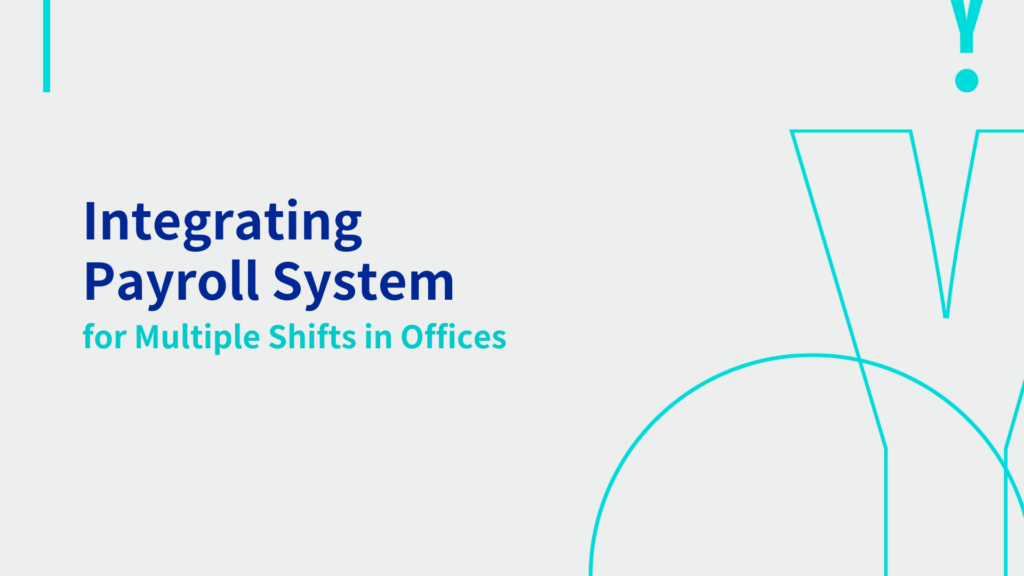
Managing payroll already feels challenging, but when multiple shifts enter the picture, complexity rises quickly. Businesses often struggle to track hours, overtime, allowances, and compliance accurately.
Errors not only hurt employee trust but also increase compliance risks. Managers must reconcile late-night shifts, weekend hours, and overlapping schedules without missing details. Here, the best payroll system can help, but how?
Furthermore, calculating variable pay across teams can become overwhelming without structured systems. Therefore, many businesses face frustration with delays, errors, and employee dissatisfaction. Fortunately, modern payroll management solutions help address these pain points effectively.
Therefore, by implementing strategic tools and processes, businesses can handle multiple shifts confidently, ensuring accuracy, compliance, and transparency. So, let’s explore how you can achieve smooth payroll management while reducing manual effort and improving efficiency.
- Understanding The Complexity of Payroll with Multiple Shifts
- Common Challenges in Multi-Shift Payroll Management
- Why Businesses Need Streamlined Payroll Systems for Shifts?
- Benefits of Efficient Multi-Shift Payroll Management
- Benefits of Efficient Multi-Shift Payroll Management
- Essential Features for Multi-Shift Payroll Management Systems
- Best Practices for Managing Multi-Shift Payroll
- How Payroll Software Handles Multiple Shifts Smoothly?
- Case Example: Multi-Shift Payroll in Action
- How Businesses Can Transition Smoothly to Automated Payroll?
- The Future of Multi-Shift Payroll Management
- How Professional Payroll Services Can Help Businesses?
- End Note
Understanding The Complexity of Payroll with Multiple Shifts
Managing payroll for single-shift businesses is usually straightforward, but multiple shifts introduce additional layers of complexity.
- Employees often work irregular hours that may overlap or extend beyond standard working days.
- Night shifts require allowances and additional compliance checks.
- Weekend and overtime pay calculations differ by region and labor laws.
Consequently, businesses face significant challenges aligning workforce schedules with payroll requirements. Without structured systems, mismanagement is inevitable.
Common Challenges in Multi-Shift Payroll Management
1. Tracking Employee Hours Accurately
Shift-based employees often switch between day, night, or rotational patterns. Manual tracking leads to discrepancies, creating payroll disputes.
2. Handling Overtime And Allowances
Night shifts often include extra pay allowances, while weekends require overtime calculations. Without automation, these calculations become error-prone. Here, an efficient software system for HR Hong Kong can assist.
3. Ensuring Compliance with Labor Laws
Labor laws mandate specific pay structures, overtime limits, and shift-hour restrictions. Non-compliance leads to penalties and legal complications.
4. Managing Employee Absenteeism
Frequent shift changes make tracking absenteeism difficult. Unmonitored absenteeism directly affects payroll accuracy and increases managerial workload.
5. Integrating Data from Multiple Departments
Payroll requires information from HR, operations, and shift managers. So, without centralized integration, data silos delay salary processing.
Why Businesses Need Streamlined Payroll Systems for Shifts?
Businesses operating across multiple shifts need payroll systems that simplify calculations, automate compliance, and centralize data management.
Such systems eliminate manual errors, ensuring timely and accurate payments. Moreover, automation reduces administrative burdens and fosters employee trust.
Consequently, businesses experience smoother operations, better compliance, and improved workforce satisfaction.
Benefits of Efficient Multi-Shift Payroll Management
Businesses operating across multiple shifts need payroll systems that simplify calculations, automate compliance, and centralize data management.
Such systems eliminate manual errors, ensuring timely and accurate payments. Moreover, automation reduces administrative burdens and fosters employee trust.
Consequently, businesses experience smoother operations, better compliance, and improved workforce satisfaction.
Benefits of Efficient Multi-Shift Payroll Management
- Accuracy in Salary Calculations: Automated systems ensure each shift, allowance, and overtime hour is correctly calculated, reducing disputes and errors.
- Enhanced Compliance Assurance: Payroll software adapts to local labor regulations, ensuring companies remain compliant without manual monitoring.
- Employee Satisfaction & Retention: Transparent and accurate payroll builds trust. Employees working night shifts feel valued when compensated fairly.
- Administrative Time Savings: HR teams save hours otherwise spent reconciling manual timesheets. Thus, an efficient payroll system allows them to focus on strategic growth initiatives.
- Improved Decision-Making with Data Insights: Modern payroll tools generate detailed reports, helping managers analyze workforce costs, productivity, and overtime trends.
Essential Features for Multi-Shift Payroll Management Systems
When choosing payroll management systems, businesses must consider features tailored to multi-shift operations.
- Shift Scheduling Integration: Ensures payroll data syncs with attendance and scheduling platforms.
- Automated Overtime Calculations: Eliminates guesswork with accurate real-time pay calculations.
- Compliance Updates: Automatically adjusts to changes in labor laws or overtime policies.
- Cloud-Based Accessibility: Provides real-time data access across departments and locations.
- Employee Self-Service Portals: Allow employees to view payslips, shift records, and allowances independently.
Best Practices for Managing Multi-Shift Payroll
1. Adopt Automated Payroll Software
Investing in technology reduces manual intervention and ensures accurate shift-based payroll. Automation eliminates repetitive administrative tasks.
2. Centralize Attendance And Scheduling
Integrate attendance tracking with payroll systems for seamless data flow. This reduces duplicate entries and errors.
3. Train Managers & HR Staff
Educating staff on payroll software ensures smooth adoption. Proper training reduces mistakes and increases efficiency.
4. Regular Compliance Audits
Schedule periodic audits to confirm compliance with labor regulations, overtime payments, and employee rights.
5. Use Analytics for Optimization
Leverage payroll data by HR Hong Kong to identify overtime trends, high labor costs, and employee preferences. Use these insights to optimize scheduling.
How Payroll Software Handles Multiple Shifts Smoothly?
Payroll software is designed to adapt to multi-shift environments. Here’s how it works:
- Automated Attendance Capture: Biometric systems track check-ins and check-outs accurately.
- Custom Shift Policies: Businesses can define rules for night allowances or split shifts.
- Real-Time Overtime Calculation: Software calculates pay instantly once employees complete their shifts.
- Integrated Reporting Tools: Managers get consolidated reports to analyze costs and performance.
Case Example: Multi-Shift Payroll in Action
Imagine a call center operating across three shifts—day, evening, and night. Payroll challenges include overtime, allowances, and compliance. Implementing payroll software streamlines this process.
Attendance integrates automatically, allowances apply instantly, and salaries are generated without manual reconciliation. Employees trust the process, managers save time, and compliance risks are reduced significantly.
How Businesses Can Transition Smoothly to Automated Payroll?
Transitioning to automated payroll requires structured steps.
- Assess Current Payroll Processes: Identify pain points in manual or semi-automated workflows.
- Select Suitable Payroll Software: Choose one offering features designed for multiple shifts.
- Train Teams & Employees: Ensure staff understand and adopt the system.
- Run Parallel Payroll Cycles Initially: Test the accuracy of the payroll system before full implementation.
- Monitor & Optimize: Continuously refine processes for efficiency.
The Future of Multi-Shift Payroll Management
Emerging technologies are transforming payroll. Artificial intelligence and machine learning will optimize scheduling, predict absenteeism, and ensure precise compliance management.
Additionally, cloud-based platforms will enhance remote accessibility. Ultimately, businesses adopting modern payroll solutions will gain a competitive advantage by fostering trust, compliance, and operational efficiency.
How Professional Payroll Services Can Help Businesses?
Sometimes businesses prefer outsourcing payroll to professionals. Payroll service providers bring expertise, compliance knowledge, and advanced tools.
Outsourcing reduces risks and administrative burdens. Furthermore, it ensures businesses remain updated with legal requirements while maintaining employee trust. For companies struggling with multi-shift complexities, outsourcing proves cost-effective and efficient.
End Note
Managing payroll across multiple shifts doesn’t have to be overwhelming. By adopting automated systems, businesses can handle complexities with confidence. Accuracy, compliance, and transparency improve when technology drives payroll processes.
So, whether through an in-house payroll system or outsourcing, businesses can achieve efficiency and employee satisfaction simultaneously. Ultimately, streamlined payroll ensures growth and operational harmony.
If you want to integrate the best payroll management system at your office, visit YOOV.
Connect with YOOV

WhatsApp:Click Here
Email:hello@yoov.com
Website:https://www.yoov.com/